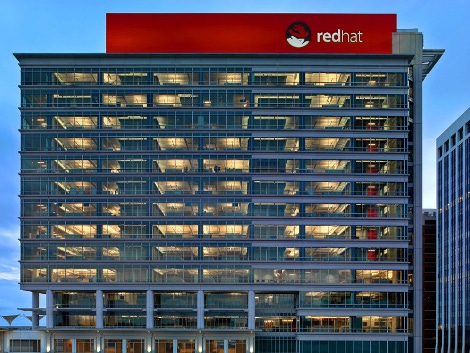Red Hat Builds Native Edge Computing Features into RHEL and OpenShiftRed Hat Builds Native Edge Computing Features into RHEL and OpenShift
The features are meant to make it easier for customers to add edge deployments to their existing infrastructure.
December 9, 2020

At KubeCon a few weeks back, Red Hat revealed it's been getting its ducks in a row to take advantage of the move to the edge by building edge computing capabilities into Red Hat Enterprise Linux and the Red Hat OpenShift Kubernetes platform.
Being prepared with the right products and approaches is important, because a lot of money is going to be spent and made on edge deployments. According to San Francisco-based Grand View Research, the edge was a $3.5 billion global market in 2019, a number that's expected to climb to $43.4 billion by 2027.
As edge computing has moved from concept to reality, and as everyone from data center operators to telcos to hardware and software vendors have prepared to deal with the edge's increasing impact, it's become accepted that it's not a singularity, and that there are different types of edges, based on geography, workloads, and a host of other factors.
"Edge is not just one thing, it's multiple things, multiple layers," Nicolas Barcet, Red Hat's senior director of technology strategy, told DCK. "A single customer use case may have up to five layers of edge-related infrastructure, going from the IoT device all the way to the aggregation data centers. What we need to offer as a software infrastructure provider is all the components to build according to the topology that the customer wants for that use case."
Red Hat has identified three basic edge architectures, or types of edges:
The "far edge" might be single server locations with somewhat limited internet connections, along with power and space constraints.
The "closer edge" might be a factory, a branch office, or a retail store, where the network is more reliable than at the far edge and with maybe two or three servers instead of one. Security is still an issue, and there are likely no IT experts on premises.
The "central edge," which is probably a regional data center, adds security and some degree of IT staff at the ready, and can control some of the compute at the "far" and "closer" edges.
According to Barcet, Red Hat 8.3, which was released in early November, and Red Hat OpenShift 4.5, released in August, have added capabilities for addressing issues for all of the edge types.
For the far edge, RHEL now has Image Builder, which allows users to custom build a RHEL image to include only the components that will be needed in the deployment, which is useful when bandwidth might be limited and with security being an issue.
An intelligent rollback capability has also been added to RHEL, which allows users to temporarily boot from a new image, then provides health checks specific to the workloads being run to detect conflicts or code issues, and if it fails, boot back to the old image.
Three-node cluster support in OpenShift means that users can now run a single remote worker node at a small far-edge location, with the node being managed by a supervisor node at a larger site.
"In the next year we'll be introducing a third possibility, which is to run a full standalone OpenShift on a single server," he said. "Once we have that, we will have covered all the possible requirements that we've seen for these far edge locations."
For the closer edge, where there might be more compute and better connections, remote worker nodes again offer a solution.
"We can have a national cluster with remote worker nodes on these sites," he said. "You can also deploy a standalone cluster as small as three nodes."
The central edge, according to Barcet, remains "basically standard OpenShift," but with a management layer to supervise the nodes running at the closer and far edges.
The secret sauce here, he said, is Red Hat's Advanced Cluster Management for Kubernetes on top of OpenShift, which provide the ability to manage a fleet of OpenShift clusters deployed in this manner.
"That's what we're building," he said. "We think we'll be complete with our vision of how to deliver any use case for the edge by the end of next year, but we've already reached a milestone where we can satisfy our requirements, such as manufacturing, industrial, and telco requirements. That's a noteworthy step for us."
About the Author
You May Also Like







